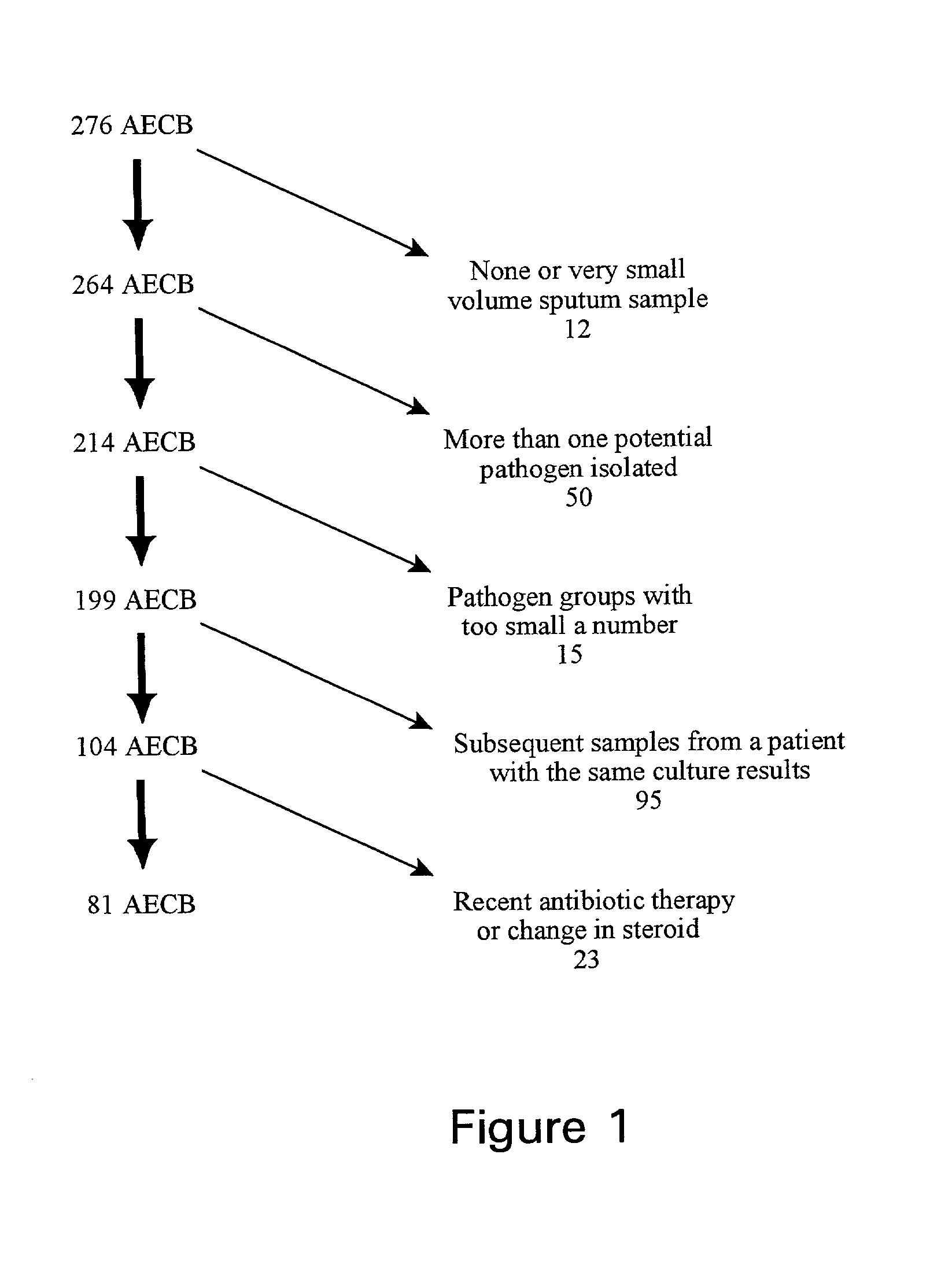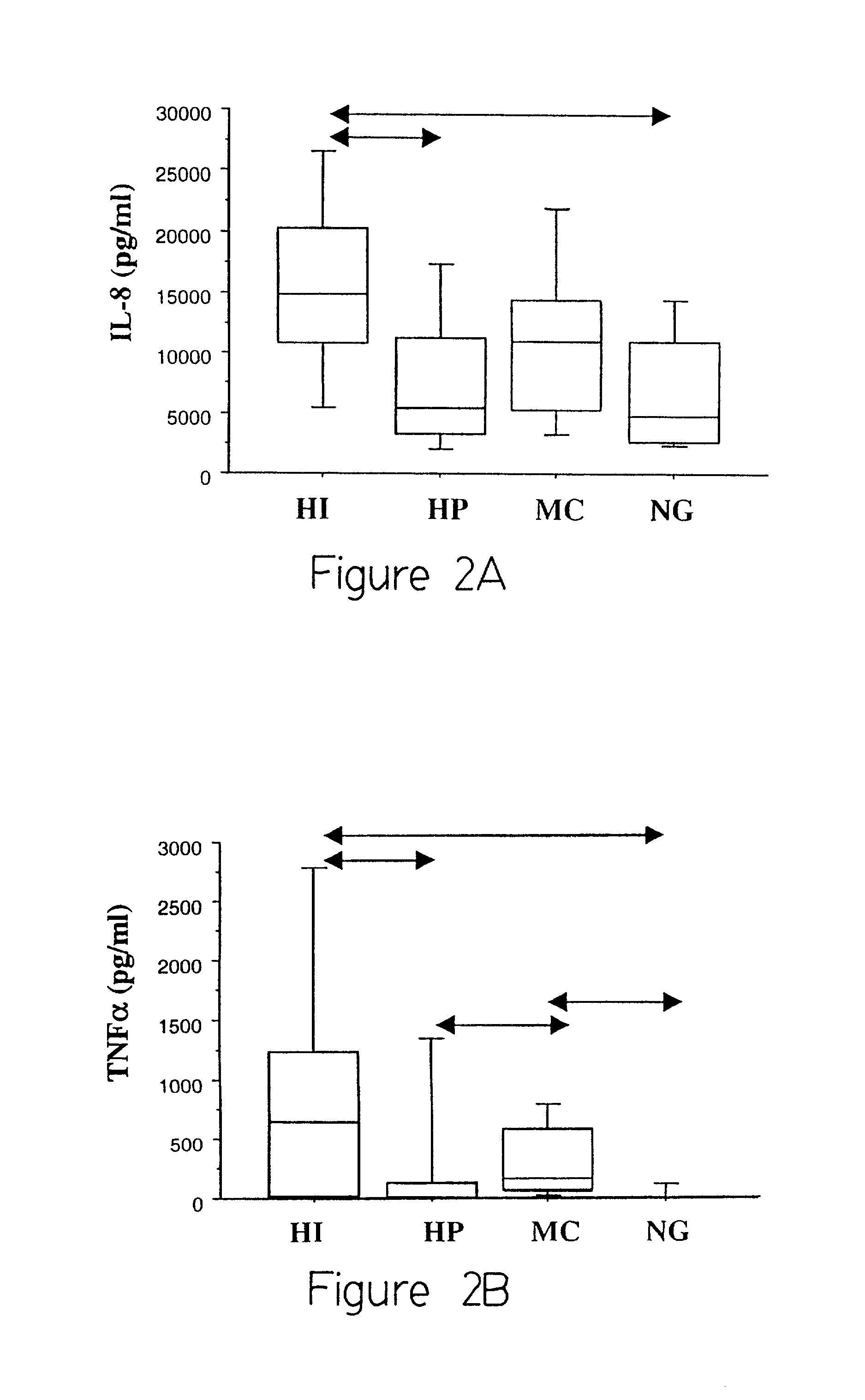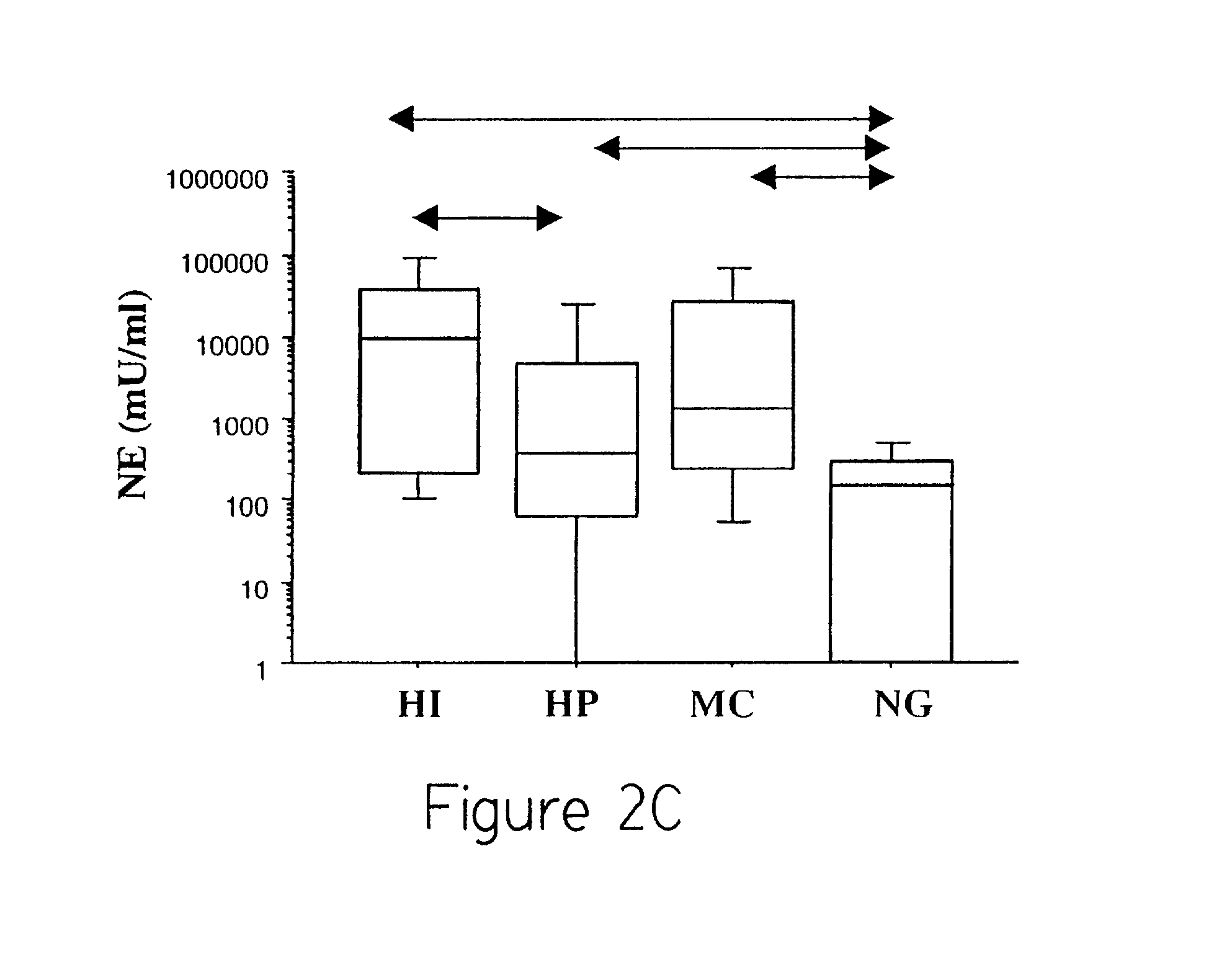Method for detecting bacterial exacerbations of chronic lung disease
- Summary
- Abstract
- Description
- Claims
- Application Information
AI Technical Summary
Problems solved by technology
Method used
Image
Examples
example 2
[0028] This embodiment describes the properties of sputum samples obtained from individuals in Example 1. As discussed above, sputum induction with hypertonic saline has become a widely accepted research technique to obtain lower respiratory tract secretions in airway diseases such as asthma and COPD. To assess the adequacy of the expectorated sputum samples as representative of the lower airway milieu, 52 consecutive induced sputum samples from 31 patients were compared with spontaneously expectorated sputum collected by the patient on the morning of the induction. A volume of 30 cc of hypertonic (3%) saline was nebulized over 15-20 minutes with an ultrasonic nebulizer (DeVilbiss) 099HD to induce sputum production. The paired (induced versus spontaneously expectorated) sputum samples were graded for purulence and viscosity, subjected to gram staining and microscopic examination and measurement of fibrinogen level (a marker for lower respiratory tract secretions). Table 2 shows the ...
example 3
[0031] This embodiment describes the measurement of inflammation markers in sputum samples obtained as described in Examples 1 and 2. All sputum supernatants and standards were tested in duplicate and mean values were used. Intra-assay coefficient of variation of <10% and inter-assay coefficient of variation of <15% were accepted. Because of limited volume of sputum supernatant available for a small number of samples, all measurements were not performed on all samples. The following assays were performed.
IL-8 Assay
[0032] A sandwich enzyme linked immunosorbent assay (ELISA) assay was developed. Commercially available reagents were used for this assay (e.g., from R&D Systems, Minneapolis, Minn.). All intermediate washes were done with plate wash buffer (PWB, PBS with 0.05% Tween-20). Standard microtiter wells were coated with 50 .mu.l of goat anti-human IL-8 antibody diluted to 4 .mu.g / ml in CBC buffer (0.1M sodium carbonate, 0.1M sodium bicarbonate, pH 9.6) overnight at room temperat...
example 4
[0037] This example describes the results of the assays of Example 3. The 81 sputum samples studied were divided into 4 groups: HI (H. influenzae isolated as sole pathogen on culture, n=20), HP (H. parainfluenzae isolated as sole pathogen on culture, n=27), MC (M. catarrhalis isolated as sole pathogen on culture, n=14), and NG (only normal flora isolated on culture, n=20).
[0038] IL-8 was detectable in all 81 sputa tested, TNF.alpha. in 40 of the 79 sputa tested and free NE activity in 66 of the 80 sputa tested. FIGS. 2A-2C depict the results obtained. HI exacerbations were associated with significantly higher sputum IL-8, TNF.alpha. and NE when compared to pathogen-negative (NG) exacerbations. MC exacerbations were associated with significantly higher sputum TNF.alpha. and NE when compared to pathogen-negative (NG) exacerbations. Except for significantly higher sputum NE, airway inflammation in HP exacerbations was similar to pathogen-negative (NG) exacerbations. There were differen...
PUM
| Property | Measurement | Unit |
|---|---|---|
| Color | aaaaa | aaaaa |
| Level | aaaaa | aaaaa |
Abstract
Description
Claims
Application Information
 Login to View More
Login to View More - R&D
- Intellectual Property
- Life Sciences
- Materials
- Tech Scout
- Unparalleled Data Quality
- Higher Quality Content
- 60% Fewer Hallucinations
Browse by: Latest US Patents, China's latest patents, Technical Efficacy Thesaurus, Application Domain, Technology Topic, Popular Technical Reports.
© 2025 PatSnap. All rights reserved.Legal|Privacy policy|Modern Slavery Act Transparency Statement|Sitemap|About US| Contact US: help@patsnap.com



